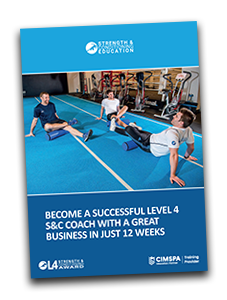Every week I must get asked “Why are my calves so tight? or, how come I can’t get my hamstring to loosen up?” Although these issues may be related to a variety of different causes, my first presumption is usually joint mobility.
Improving your mobility will undoubtedly enhance your performance, explore below my top five tips on how to improve your mobility.
Understand what you really need most right now – mobility OR stability?
I’ve seen so many people focus on the wrong thing. Of course, you cannot develop either of these in total isolation. The key flaw I see often that slows an individual’s process right out of the blocks is: Focussing on mobility work that isn’t required! This might be spending 20 minutes before a session/warm up when more time should have been spent on motor control and activation. Hypermobile athletes do not need the same focus as Hypomobile athletes!
The challenge is to work out if an athlete really has a lack of mobility, or rather a lack of control (stability), as if your body has a great range of motion in a movement but isn’t capable of controlling it, chances are it won’t let you! It’ll lock up to protect you. This can often appear to be poor mobility. If joints can easily get into position passively, or with the stability/control challenge regressed, this is a sign that the mobility is sufficient and control should be the key focus.
For example, if you can squat lightly holding onto a support or lying on your back hitting some nice angles in your ankles, knees and hips, you haven’t’ just gained masses of mobility, you’ve removed the control requirement!
This is the first thing to check, otherwise your efforts will be wasted.
Do mobility work, then use it, move and get strong
Lots of people do their mobility work after their warm-down. That’s ok to relax and reset the body after a hard session, however, as most of the response gained from mobility work is neurological and short-lived, it’s key to use it, or lose it!
For big gains, get some mobility done before the main training session, etch in better movement patterns and get stronger, then the results are more likely to hang around. Otherwise the rapid increases in range of motion often seen will be short-lived, with about 10 minutes as the maximum time I’ve seen gains retained.
Use great technique, no different to when lifting or moving in the gym
Technique is important when performing any movement patterns. Why do we then rush through mobility work and no consider what we are trying to achieve. So often I see people foam rollering their quads like they are making pastry with a rolling pin! Relaxing muscles and resetting receptors will not happen if you are vigorously rolling your legs up and down a lead pipe! It’s likely to do the polar opposite to what you’re aiming for. Don’t be afraid to take your time, ensure you are moving joints and play around to find positions, movements and angles that are most effective to you at that time.
Be consistent
Results can come quick, however, I’ve already mentioned they are really short-lived.
We know that we will be more likely to retain mobility improvements if we improve our motor control straight afterward. Be consistent with your work and your mobility gains will become long-lasting. Little and often is key.
Move on if results aren’t quick
You should get quick, albeit short-lived gains from your drills, so if you aren’t, perhaps you’re not doing the drill quite right – the wrong pace, or wrong angles can make the world of difference.
Or, perhaps you don’t need that drill! Regardless, just move on if you don’t see tangible gains after 1-2 minutes.
It’s all too easy to end up with 50 minutes of mobility and 10 minutes of training – don’t make an industry out of it, it’s supposed to be complimentary!
Ready to get started?
Download the brochure NOW to find out more about the L4 Award and what’s included in the 17 modules and discover the 5 bonus sections.
